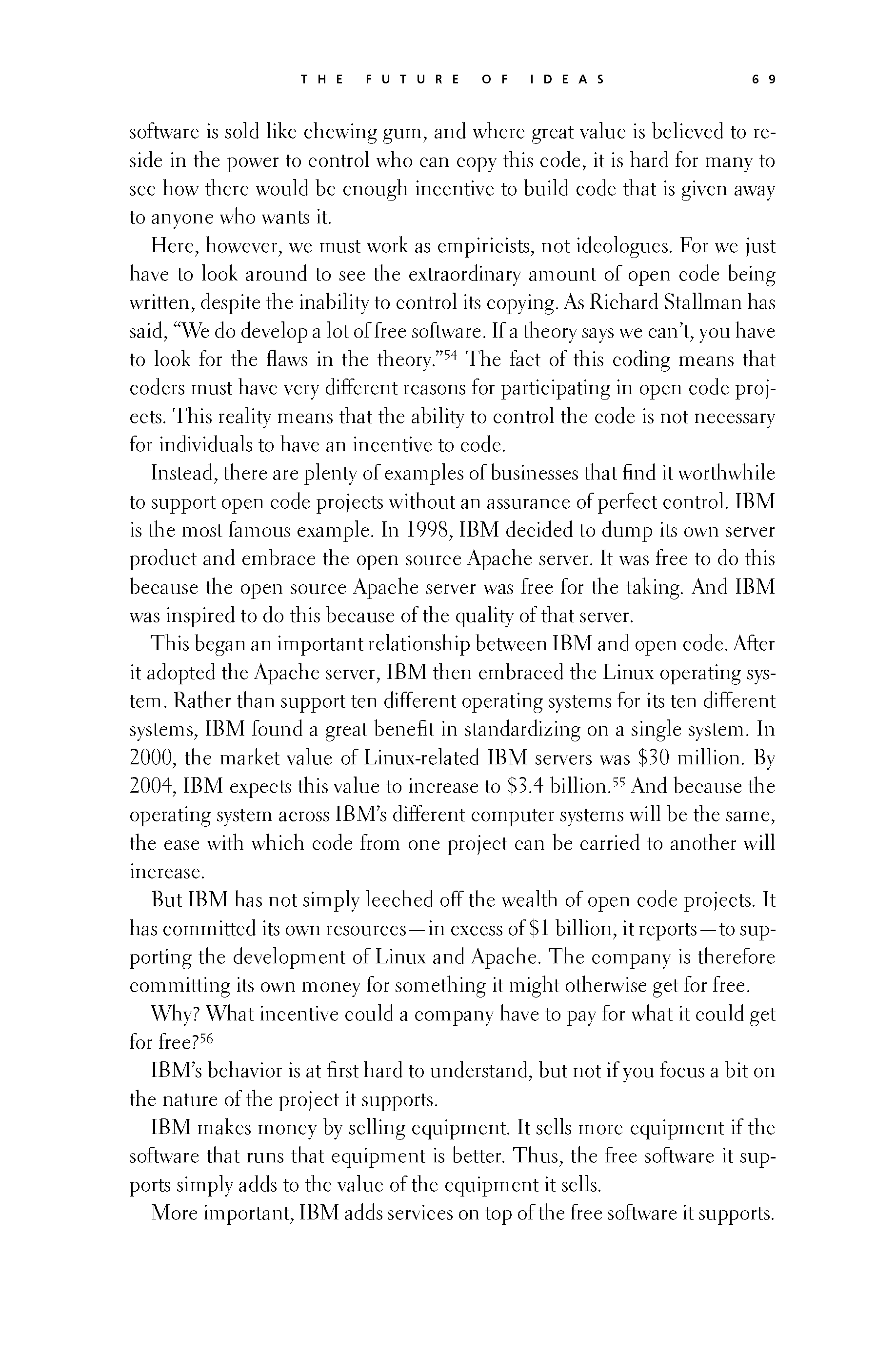 p068 _
-chap- _
toc-1 _
p069w _
toc-2 _
+chap+ _
p070
p068 _
-chap- _
toc-1 _
p069w _
toc-2 _
+chap+ _
p070
software is sold like chewing gum, and where great value is believed to re-
side in the power to control who can copy this code, it is hard for many to
see how there would be enough incentive to build code that is given away
to anyone who wants it.
Here, however, we must work as empiricists, not ideologues. For we just
have to look around to see the extraordinary amount of open code being
written, despite the inability to control its copying. As Richard Stallman has
said, "We do develop a lot of free software. If a theory says we can't, you have
to look for the flaws in the theory."[4-54] The fact of this coding means that
coders must have very different reasons for participating in open code proj-
ects. This reality means that the ability to control the code is not necessary
for individuals to have an incentive to code.
Instead, there are plenty of examples of businesses that find it worthwhile
to support open code projects without an assurance of perfect control. IBM
is the most famous example. In 1998, IBM decided to dump its own server
product and embrace the open source Apache server. It was free to do this
because the open source Apache server was free for the taking. And IBM
was inspired to do this because of the quality of that server.
This began an important relationship between IBM and open code. After
it adopted the Apache server, IBM then embraced the Linux operating sys-
tem. Rather than support ten different operating systems for its ten different
systems, IBM found a great benefit in standardizing on a single system. In
2000, the market value of Linux-related IBM servers was $30 million. By
2004, IBM expects this value to increase to $3.4 billion.[4-55] And because the
operating system across IBM's different computer systems will be the same,
the ease with which code from one project can be carried to another will
increase.
But IBM has not simply leeched off the wealth of open code projects. It
has committed its own resources -- in excess of $1 billion, it reports -- to sup-
porting the development of Linux and Apache. The company is therefore
committing its own money for something it might otherwise get for free.
Why? What incentive could a company have to pay for what it could get
for free?[4-56]
IBM's behavior is at first hard to understand, but not if you focus a bit on
the nature of the project it supports.
IBM makes money by selling equipment. It sells more equipment if the
software that runs that equipment is better. Thus, the free software it sup-
ports simply adds to the value of the equipment it sells.
More important, IBM adds services on top of the free software it supports.
[[69]]
p068 _
-chap- _
toc-1 _
p069w _
toc-2 _
+chap+ _
p070